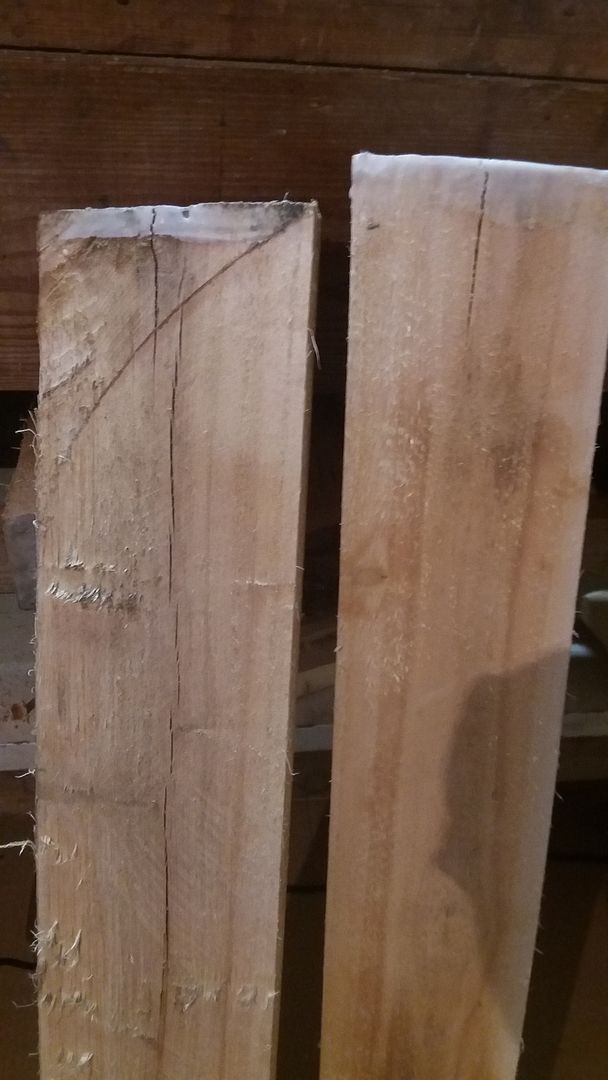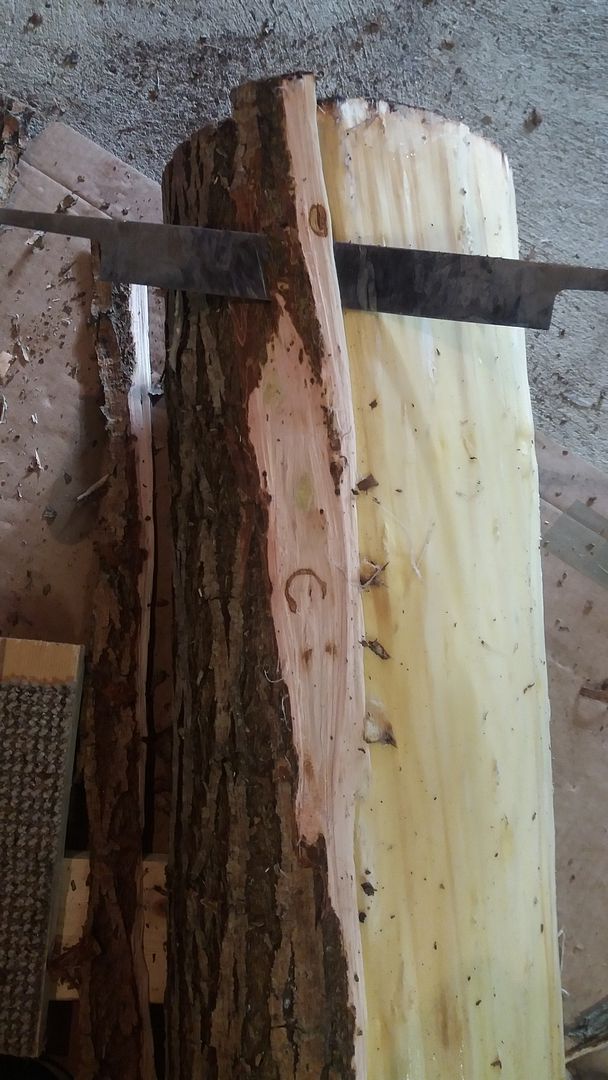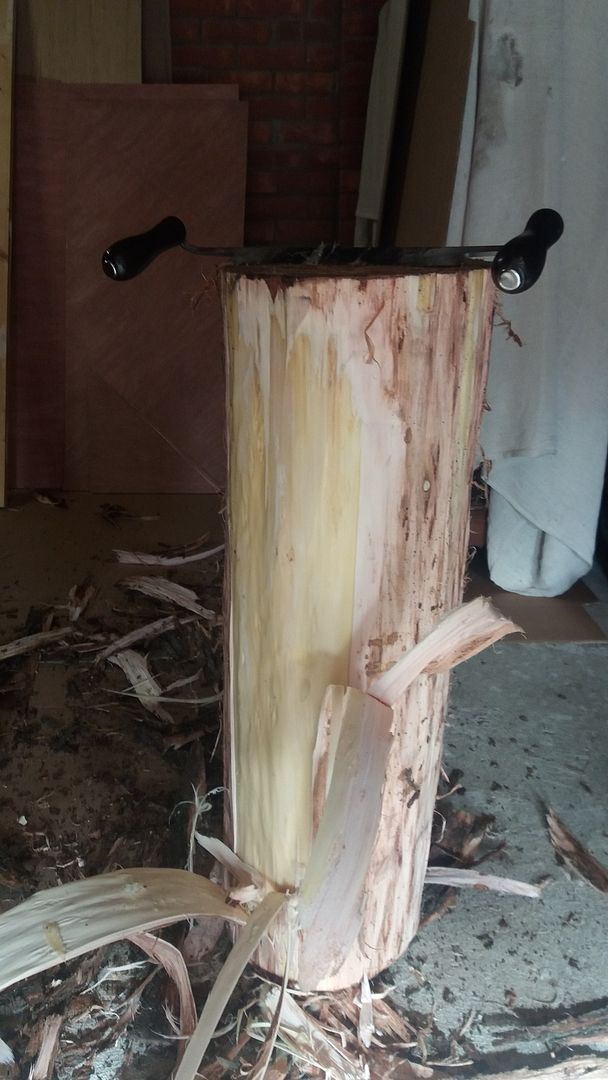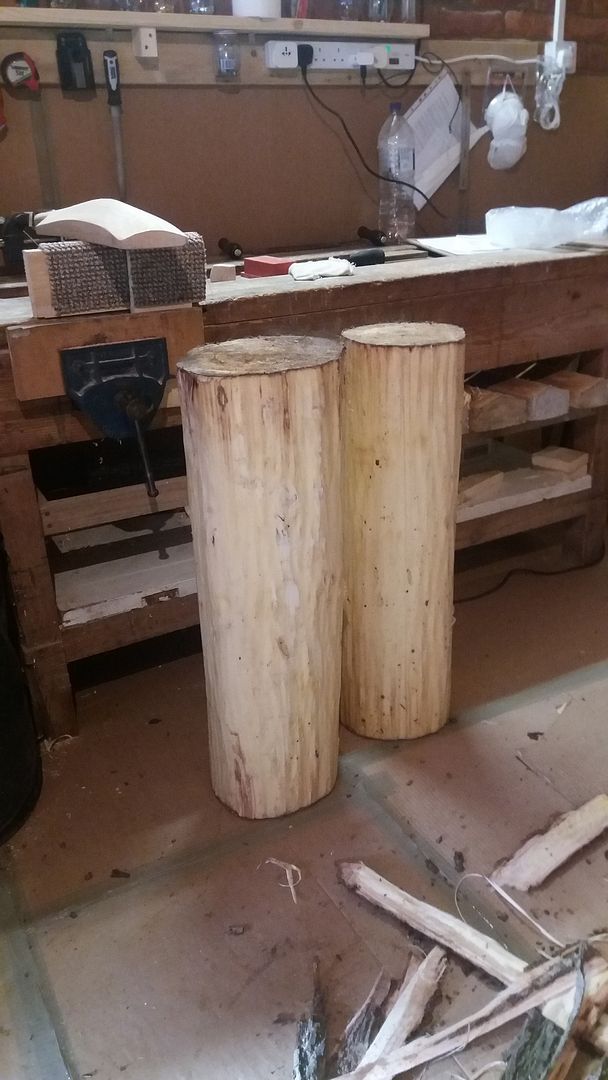I took some advice from the forum on how best to season the willow I harvested earlier this month. I think I rushed into it a little with the first 2 rounds, taken from the top of the tree trunk. After just 3 weeks, the clefts sawn from round 4 (the high point of the trunk) have split badly, beyond repair I reckon. The rings are so tight, the clefts split from the centre.


The clefts from round 3, the next one down the trunk, seem to be OK so far. The diameter of the trunk is slightly greater, which enabled me to avoid the very centre of the tree. With luck, these 2 clefts will come out OK.
So moving on, I took an opportunity yesterday evening, to strip the bark from rounds 1 and 2. They have been sat in the garage for the last 3 weeks, and cracks are appearing already, at least at the top and bottom.

My drawknife proved to be perfect for the stripping job, which is good as I have been struggling to use it on the partmades I bought to practice on and was beginning to think that I had wasted my money. It is an interesting process, the stripping. There are 2 clear layers of bark, the tough brown outer, and a soft pink inner layer - the growth layer I guess.

At first I left the pink layer, but I soon noticed that a huge amount of moisture is held between the pink bark and the yellow wood core. So, I figured it would be best to strip right down to the wood.

So, in the end, this is what I was left with:

I plan to leave the 2 stripped rounds for a few weeks, and then find someone with wedges and a big hammer. I hope to be able to split and saw at least 2-3 suitable size clefts from the 2 rounds, but success will depend on where the cracks form. There may be a number of junior size bats being crafted!
It is easy to see the problems with immature willow. The experiment is interesting so far, but to do this properly, we're gonna need a bigger tree.
All comments and suggestions welcomed.

 Author
Topic: New project update #1 (Read 2316 times)
Author
Topic: New project update #1 (Read 2316 times)
